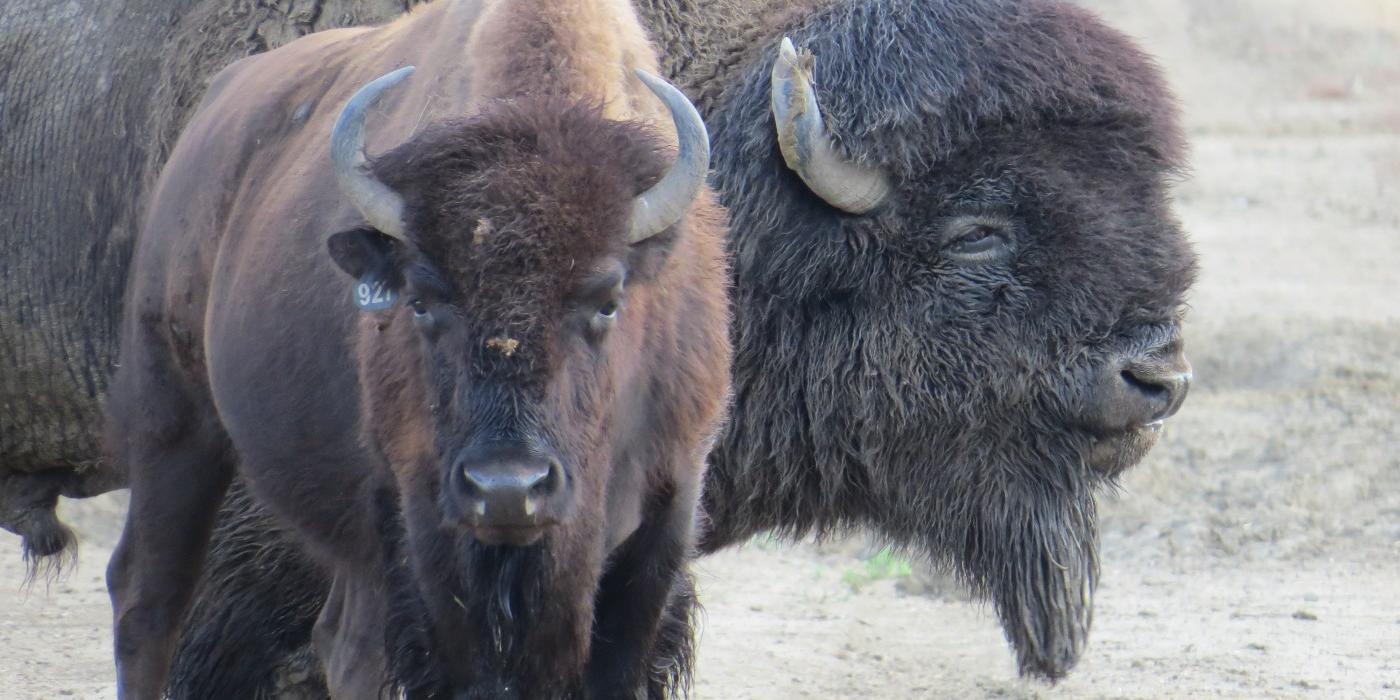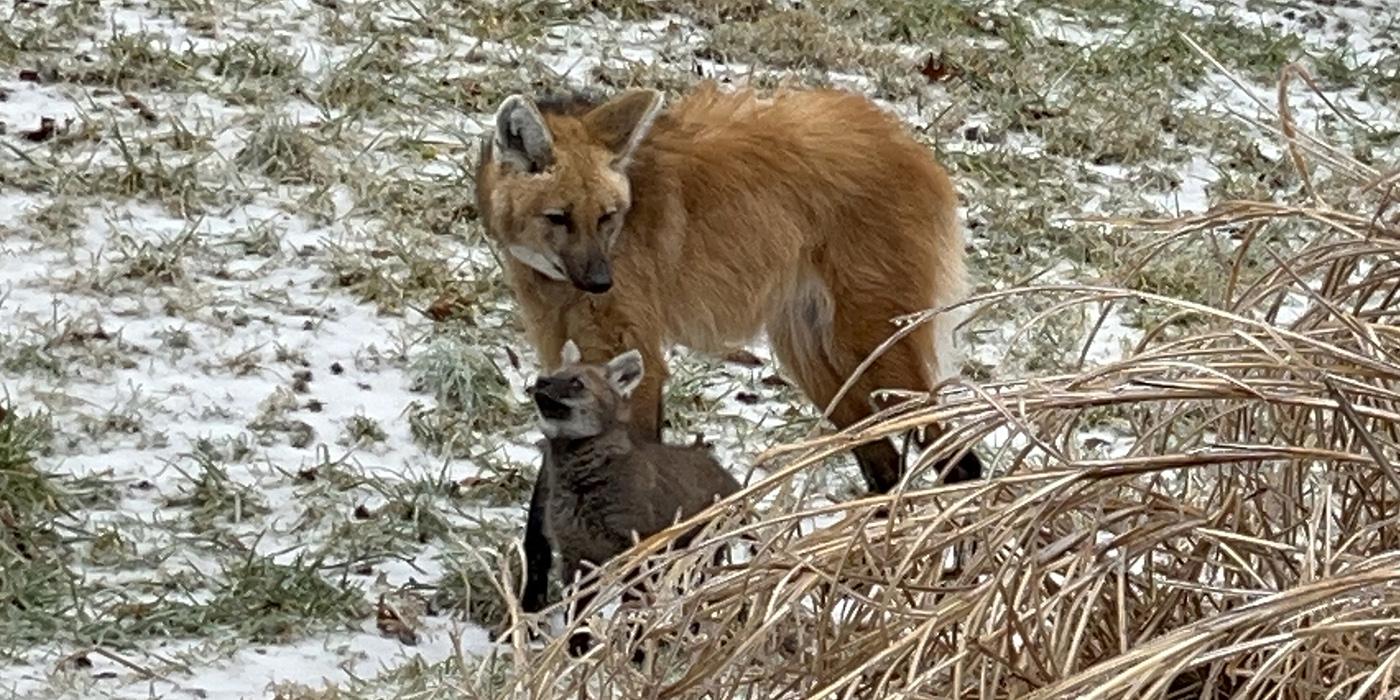Meet the Researchers Working to Save Wood Turtles
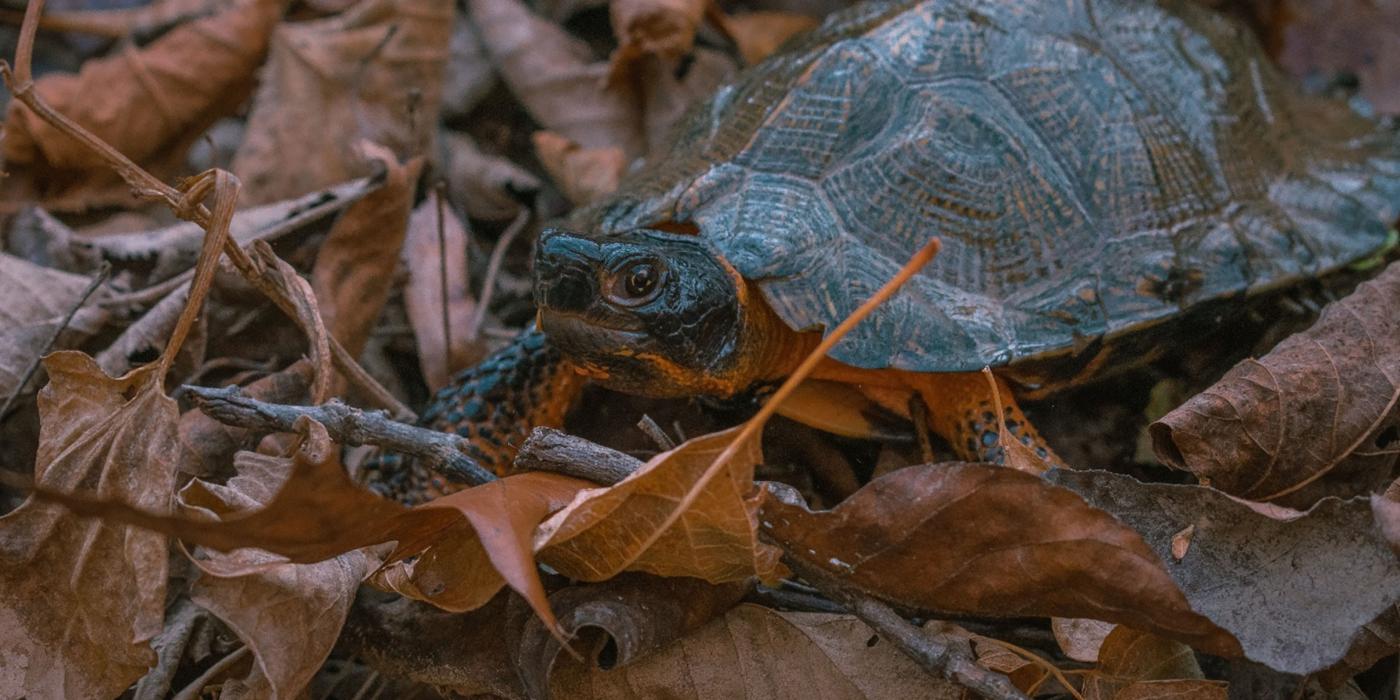
Wood turtles are made for their environment. They blend in with muddy rocks in the streambed and disappear into the shadows of fallen trees. Juvenile wood turtles with dirt-caked shells look just like decaying leaves floating downstream. Unfortunately, wood turtles can’t rely on natural camouflage alone for survival.
Wood turtles are found from northern Virginia to Nova Scotia and west to the Great Lakes but are declining across their range. In fact, they are one of the most endangered freshwater turtles in North America. In Virginia, wood turtles have lost nearly half of their historic range. Scientists want to ensure a future for these reptiles. To do so, they need to understand where wood turtles remain and how many are left.
At the Smithsonian Conservation Biology Institute, project manager Jessica Meck and research fellow Maxwell Earle survey Virginia’s streams each year, counting as many wood turtles as they can find. They also survey nearby streams in West Virginia through a collaboration with the state’s wildlife agency.
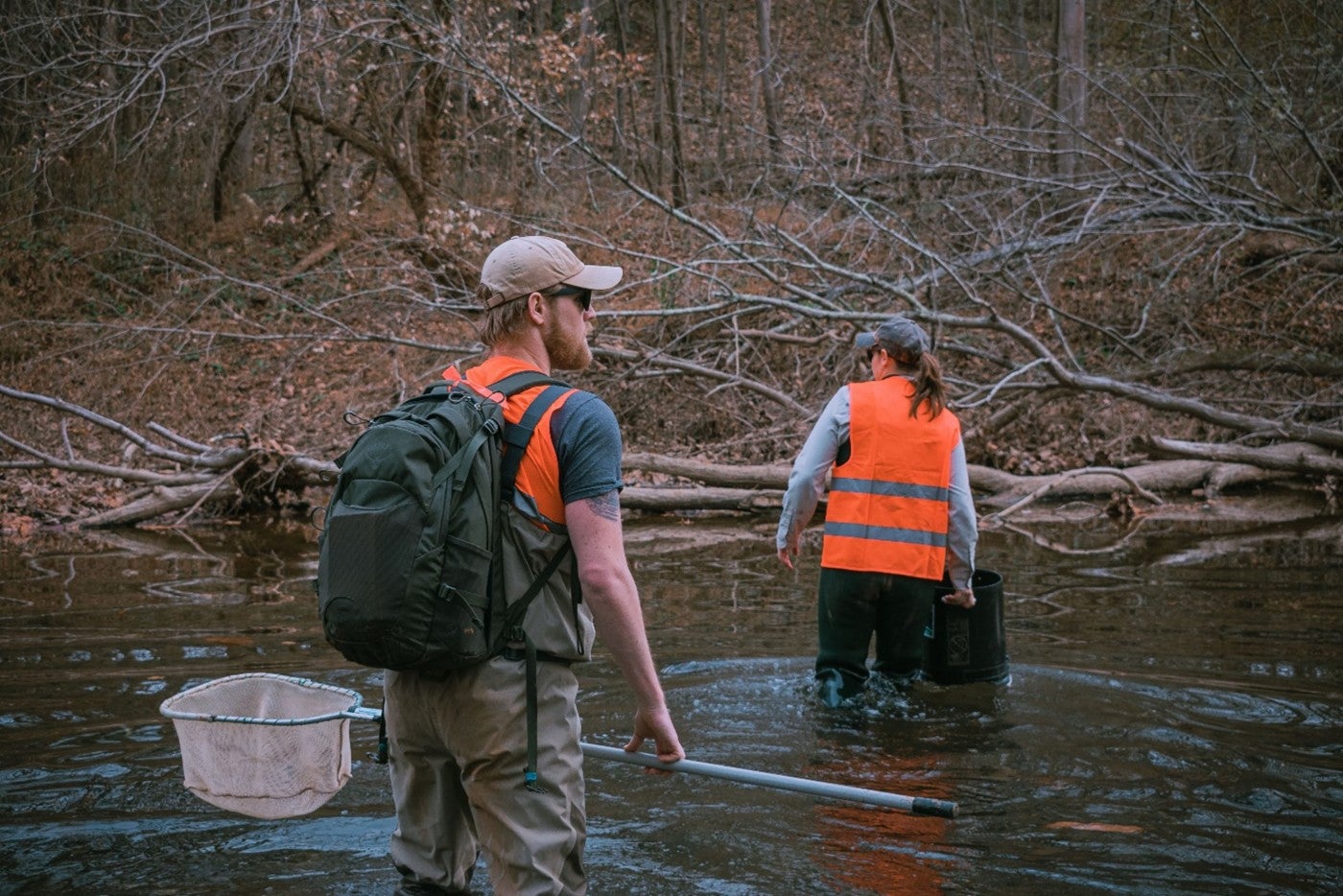
Wood turtles can live for 80 years or more, but they face many threats, including habitat loss and fragmentation and illegal collection for the pet trade. Some are struck by cars while crossing roads. Wood turtles also reproduce slowly; they typically reach sexual maturity at about 12 years old and lay only one nest a year. Raccoons, skunks and other predators eat hatchlings and young turtles, so many don’t survive to adulthood.
Because of this life history, it can take a long time for wood turtle populations to recover from losses. Researchers need to count turtles often and over long periods of time to fully understand how they are doing. When Meck and Earle survey an area, they hope to find turtles of all ages and sizes. This indicates a healthy breeding population — something that is becoming rarer across their range.
It can take Meck and Earle many hours to survey a small area for wood turtles. The turtles are difficult to spot and frequent hard to reach places. Meck and Earle comb the water in waders and search streambanks, then stop to collect data on the turtles they find. One of the first questions they ask is: have we seen this turtle before?
Though people often think of turtles as slow and stagnant, wood turtles move a lot. A male facing too much competition in a stream may walk more than 9 miles over Appalachian mountaintops to search new streams for mates.
When researchers find a wood turtle for the first time, they assign it a unique ID number by placing notches in its shell. Each notch corresponds to a number on a key that they can reference to determine a turtle’s ID number. This system allows scientists to keep track of individual turtles over time.
Meck and Earle work quickly to measure each turtle’s shell, noting its length, width and height. They also count the individual plates, or scutes, of the shell. They weigh the turtles, and finally, they assess each turtle’s health, taking note of any injuries.
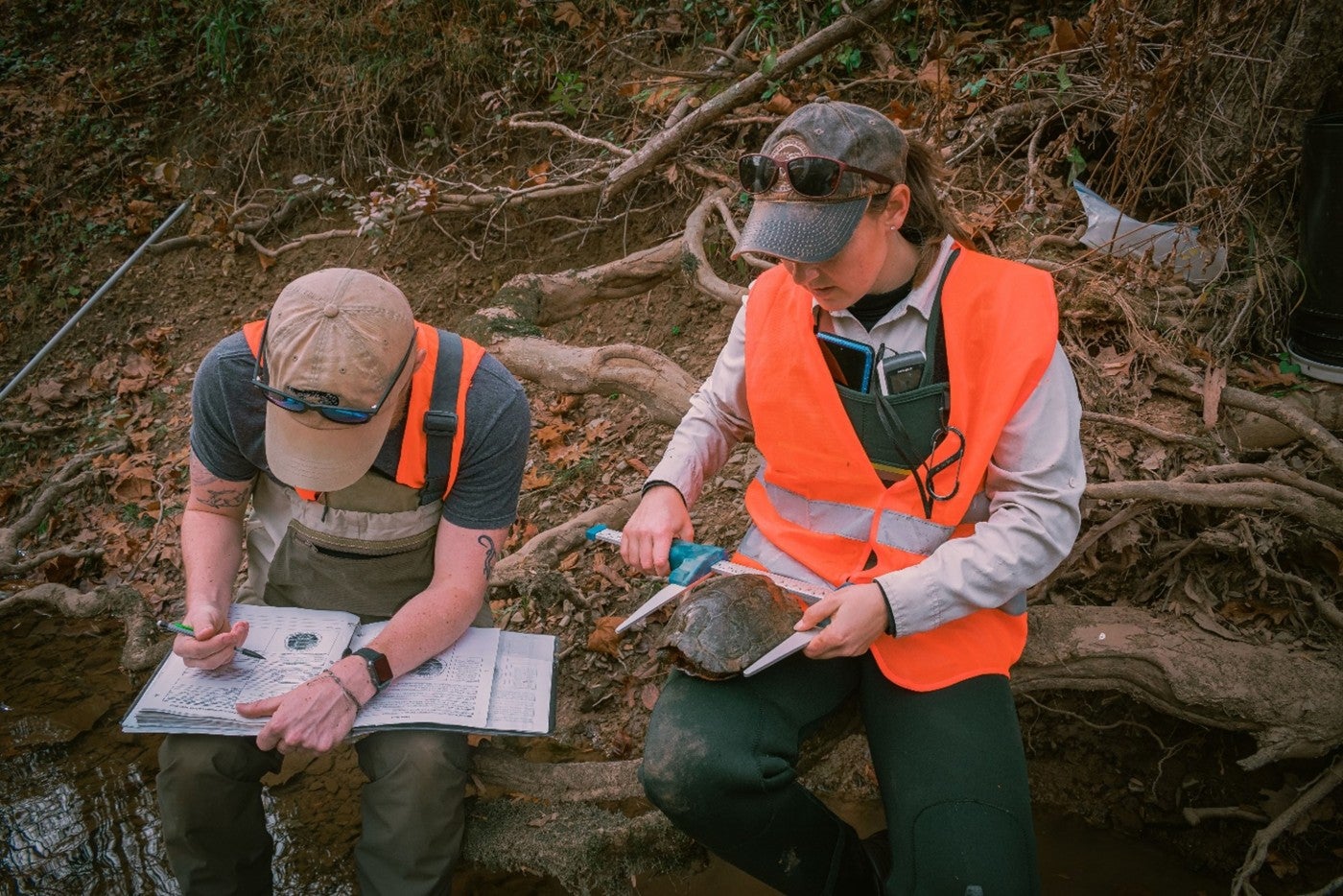
After taking careful notes, Meck and Earle release the turtles back into the stream’s shallow waters or along the bank. Some turtles stay hunkered in their shells for a while. Others quickly swim away, disappearing as they move into deeper waters.
Many streams become long-term study sites that Meck and Earle revisit across seasons or years. They may even spot some of the same turtles, a welcome encounter. Finding a mix of re-sighted and new turtles tells them the population is stable or growing.
Years of data from visual surveys can reveal a lot about the health of wood turtles. Researchers can estimate the size of populations and spot trends, which helps natural resource managers prioritize areas for protection. Given that wood turtles are declining across their range, documenting as many as possible is key to their conservation and long-term survival.
Please note: It is illegal to possess or harass wood turtles. They should never be disturbed and should only be observed from a distance. Smithsonian researchers are authorized to conduct wood turtle surveys under state research permits. They are also trained to safely handle wood turtles and minimize disturbance to the turtles’ habitat.
Curious to know more about the Conservation Ecology Center? Check out their latest stories. Wondering what the Zoo's turtles are up to? Read the recent update from Reptile Discovery Center: "These Teeny, Tiny Turtle Hatchlings Fit in the Palm of Your Hand."


